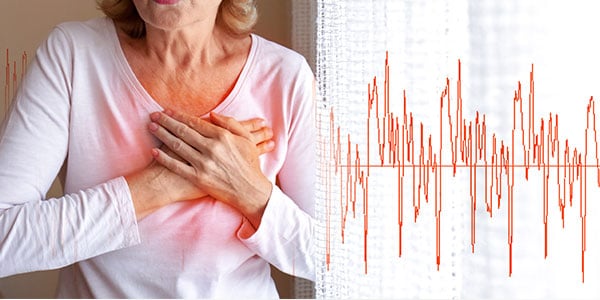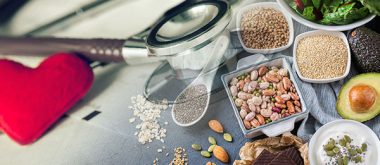As women approach and pass the time of menopause, typically around age 51, they face a significant increase in their risk of heart disease.
This heightened risk is mainly the result of a shift in hormone levels and certain lifestyle patterns.
Risk of Postmenopausal Heart Disease
Women have three types of estrogen: estradiol, estriol and estrone. After menopause, when levels of estradiol fall, it creates a shift in the amount of estradiol and testosterone levels in her bloodstream. This change in hormonal levels is linked to a higher risk of cardiovascular disease in a postmenopausal woman. Postmenopausal women with naturally higher estradiol levels face a statistically lower risk of cardiovascular disease.
Menopause is a natural phase in a woman’s life. The time of its onset is heavily influenced by genetic factors. However, the increased risk of cardiovascular disease can be mitigated by lifestyle changes.
 Studies show that HRT, or hormone replacement therapy, is not a suitable treatment for the avoidance of cardiovascular disease. In fact, it may actually increase the risk. Short-term treatment with HRT will ease certain menopausal symptoms, such as hot flashes and vaginal dryness, but it won’t decrease the risk of heart disease.
Studies show that HRT, or hormone replacement therapy, is not a suitable treatment for the avoidance of cardiovascular disease. In fact, it may actually increase the risk. Short-term treatment with HRT will ease certain menopausal symptoms, such as hot flashes and vaginal dryness, but it won’t decrease the risk of heart disease.
Reducing the Risk
Smoking
If you smoke, stop. A smoker has already created a higher risk of cardiovascular disease from the habit itself. This is particularly true for long-time smokers. Failing to quit will only make this condition even more likely to happen once the age of menopause occurs.
Diet
At around the time of menopause, there may be shift in a woman’s blood lipid profile, which means that there is often a rise in bad cholesterol levels. The incidence of high blood pressure also rises with age. High blood lipids and high blood pressure together create a vastly higher overall risk for cardiovascular disease.
According to the American Heart Association, a healthy diet consists of plenty of fresh fruits and vegetables. Avoid or curtail intake of white sugar and flour. Eat whole grains and low-fat dairy products. Keep your sodium and saturated fat intake low. Avoid processed foods. For protein, choose fish and poultry without the skin.
Exercise
Get at least 30 minutes of aerobic exercise a day. Good examples of aerobic exercise would be fast walking, swimming and stationary biking. It doesn’t have to be jarring or leave you gasping for breath, but routinely exercising is key. Aim to raise your heart rate by about 50 percent. For example, if your resting heart rate is 80, you’d want to raise that to about 120 while exercising. This will help to lower cholesterol and blood pressure levels.
To determine your resting heart rate, use your index finger to take your pulse. Count the beats for 15 seconds then multiply by four. To be sure you’re sufficiently raising your heart rate while exercising, simply stop for a moment and take your pulse the same way.
Get a Physical
You can’t know if your cholesterol and blood pressure readings are normal or improving if you don’t know what they are. Determine the safe range by discussing the matter with your doctor. You can also purchase a blood pressure gauge at any drugstore. It’s not expensive and is easy to use.
Deal with Stress
No one can avoid stress, but you must find a way to manage it. Unmanaged stress will only pose a greater risk of higher blood pressure.
HRT
Hormone replacement therapy won’t help you decrease your risk of heart disease. As a matter of fact, it’s actually linked to a higher risk of certain cancers. If you feel you need to treat your postmenopausal symptoms hormonally, discuss the matter with your doctor. Use the lowest dose for the shortest amount of time.
These simple changes in your lifestyle may well translate into a significantly lower risk of cardiovascular disease. They will also improve your overall health and well-being. Aren’t you worth it?





